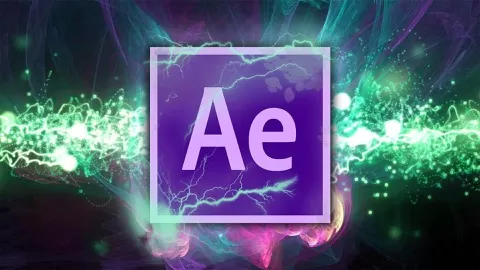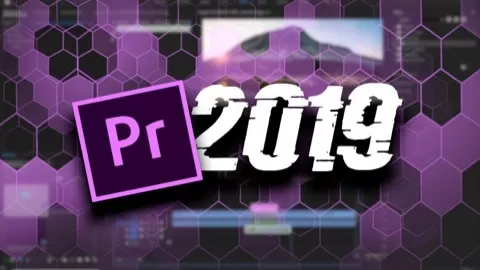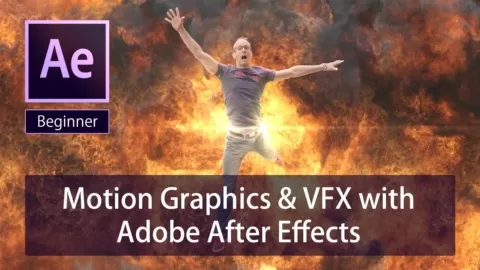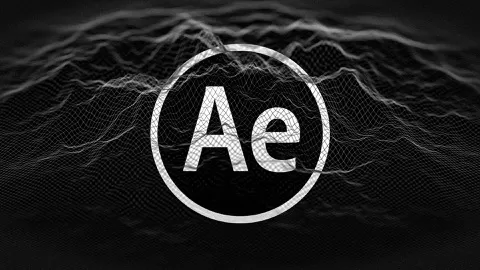ADOBE AFTER EFFECTS: (PRO LEVEL) CLASS PROJECT
- For my Class Project – There will be a number of 11 exercises that you will be doing to create withing after effects. I will be going over each one that will explain in each video and you will have to download the resources to follow along. all you will have to do is download the resources from the class project. After you downloaded the resources, follow along below what you will have to do in the class project.
1. How to copy all effects to clips and film– I will teach you how to copy effects that is available within after effects in the effect panel, with the effects that is available you can move them around with in the film or clip that you are using. Also this will make it easier for you to use a effect layer within the adjustment layer that can control how you see the effect work on the film or clip that you are using.
2. How to build custom transitions– I will teach you how to create your own transition that you can add between each scene that moves throw out the video. By learning this this will hep you learn how to create stand by scene an this will help with switch scenes within you live streams as well. Also this will help with making power points within after effects as well. Building custom transitions is very important in gaming live streams right so this will help you to building transition for other people around the world.
3. Create animation background – I will teach you how use Animation is change over time. You animate a layer or an effect on a layer by making one or more of its properties change over time. For example, you can animate the Opacity property of a layer from 0% at time zero to 100% at time 1 second to make the layer fade in. Any property with a stopwatch button to the left of its name in the Timeline panel or Effect Controls panel can be animated. You animate layer properties using keyframes, expressions, or both. Many animation presets include keyframes and expressions so that you can simply apply the animation preset to the layer to achieve a complex animated result. You work with keyframes and expressions in After Effects in one of two modes: layer bar mode or Graph Editor mode. Layer bar mode is the default, which shows layers as duration bars, with keyframes and expressions aligned vertically with their properties in the Timeline panel. Graph Editor mode does not show layer bars, and shows keyframes and expression results in value graphs or speed graphs.
4. How to create slow motion – I will teach you how to Speeding up or slowing down an entire layer by the same factor throughout is known as time-stretching. When you time-stretch a layer, the audio and the original frames in the footage (and all keyframes that belong to the layer) are redistributed along the new duration. Use this command only when you want the layer and all layer keyframes to change to the new duration. If you time-stretch a layer so that the resulting frame rate is very different from the original frame rate, the quality of motion within the layer may suffer. For best results when time-remapping a layer, use the Timewarp effect.
5. Shortcut way to move all your clips- I will teach you how to When you use a footage item as a source for different layers, you can trim each layer differently to show different portions of the source. Trimming a layer does not alter the footage item or the original source file. You can trim a layer by changing the In and Out points in the Layer panel or the Timeline panel. (You can also trim a footage item before using it to create a layer. See Create layers from footage items or change layer source.) The In point , Out point , and duration values for a layer are shown at the bottom of the Layer panel. To show this information for all layers in the Timeline panel, click the In/Out/Duration/Stretch button in the lower-left corner of the Timeline panel. The duration, In point, and Out point for the selected layer are also shown in the Info panel. In the Layer panel, In and Out points are expressed in layer time. In the Timeline panel, In and Out points are expressed in composition time. The duration is the same in both cases (unless time-remapping or time-stretching is enabled for the layer). You can extend many kinds of layers for any duration, extending their In points and Out points out past their original times. This capability applies to time-remapped layers, shape layers, layers based on still-image footage items, camera layers, light layers, and text layers. If you extend a layer back in time so that the layer extends into negative layer time (past layer time zero), a series of hash marks on the bottom of the layer bar indicates the portions of the layer that are in negative layer time. This indication is useful if you’ve applied effects to the layer—such as Particle Playground or Shatter—that use layer time to calculate their results.
6. Simple video editing – I will teach you how to use When you split a layer, both resulting layers contain all of the keyframes that were in the original layer in their original positions. Any applied track mattes retain their order, on top of the layer. After you split a layer, the duration of the original layer ends at the point of the split, and the new layer starts at that point in time. If no layer is selected when you choose Edit > Split Layer, all layers are split at the current time. Paul Tuersley provides a script on the AE Enhancers forum for splitting layers at layer markers. Lloyd Alvarez provides a script on his After Effects Scripts website that automatically detects edits in a footage layer and splits it into a separate layer for each edit (or places a layer marker at each edit).
7. How to pre-compose clips – I will teach you how to If you want to group some layers that are already in a composition, you can precompose those layers. Precomposing layers places them in a new composition, which replaces the layers in the original composition. The new nested composition becomes the source for a single layer in the original composition. The new composition appears in the Project panel and is available for rendering or use in any other composition. You can nest compositions by adding an existing composition to another composition, just as you would add any other footage item to a composition. Precomposing a single layer is useful for adding transform properties to a layer and influencing the order in which elements of a composition are rendered. Nesting is the inclusion of one composition within another. The nested composition appears as a layer in the containing composition. A nested composition is sometimes called a precomposition, which is occasionally abbreviated in casual use to precomp or pre-comp. When a precomposition is used as the source footage item for a layer, the layer is called a precomposition layer.
8. Fade in and Fade out creation – I will teach you how to start a new composition for new project in after effect. A compositionis the framework for a movie. Each composition has its own timeline. A typical composition includes multiple layers that represent components such as video and audio footage items, animated text and vector graphics, still images, and lights. You add a footage item to a composition by creating a layer for which the footage item is the source. You then arrange layers within a composition in space and time, and composite using transparency features to determine which parts of underlying layers show through the layers stacked on top of them.
9. How duplicate layers or clips – I will teach you how to organize sections of your projects in after effects. An After Effects projectis a single file that stores compositions and references to all the source files used by footage items in that project. Compositions are collections of layers. Many layers use footage items (such as movies or still images) as a source, though some layers—such as shape layers and text layers—contain graphics that you create within After Effects.A project file has the filename extension .aep or .aepx. A project file with the .aep filename extension is a binary project file. A project file with the .aepx filename extension is a text-based XML project file.
11. How to loop clips – I will teach you how to The easiest way to loop a clip is to right click it in your Projects window and select ‘Interpret Footage’ from the context menu. In the interpret footage dialog box, at the very bottom, you have an option to specify the Loop count for the clip. loop your footage is to use the Time Remapping effect. Simply select your layer and then go to Layer –> Time –> Enable Time Remapping. The Time Remapping effect allows you to use keyframes to specify at which points the clip should be at a certain playback time and you can set up keyframes to loop it from end to start. You can extend your clip as long as you want and you have full control over speeding it up or slowing it down at will, but you will have to set up all the keyframes manually.
12. Render Duplication – I will teach you how to Renderingis the creation of the frames of a movie from a composition. The rendering of a frame is the creation of a composited two-dimensional image from all the layers, settings, and other information in a composition that makes up the model for that image. The rendering of a movie is the frame-by-frame rendering of each of the frames that make up the movie. For more information on how each frame is rendered It is common to speak of rendering as if this term only applies to final output. However, the processes of creating previews for the Footage, Layer, and Composition panels are also kinds of rendering. In fact, it is possible to save a preview as a movie and use that as your final output.
DOWNLOAD PROJECT FILES – You can download the clips that you can use to follow along with the course, it is required to do so, you can use any of the clips and follow along.
(ADOBE AFTER EFFECTS COMPUTER REQUIREMENTS)
Windows
- Multicore Intel processor with 64-bit support
- Microsoft® Windows® 7 with Service Pack 1 (64 bit), Windows 8.1 (64 bit), or Windows 10 (64 bit)
- 8GB of RAM (16GB recommended)
- 5GB of available hard-disk space; additional free space required during installation (cannot install on removable flash storage devices)
- Additional disk space for disk cache (10GB recommended)
- 1280×1080 display
- Optional: Adobe-certified GPU card for GPU-accelerated ray-traced 3D renderer
- Internet connection and registration are necessary for required software activation, validation of subscriptions, and access to online services.*
macOS
- Multicore Intel processor with 64-bit support
- 10.11 (El Capitan), 10.12 (Sierra), or 10.13 (High Sierra)
- 8GB of RAM (16GB recommended)
- 6GB of available hard-disk space for installation; additional free space required during installation (cannot install on a volume that uses a case-sensitive file system or on removable flash storage devices)
- Additional disk space for disk cache (10GB recommended)
- 1440×900 display
- Optional: Adobe-certified GPU card for GPU-accelerated ray-traced 3D renderer
- Internet connection and registration are necessary for required software activation, validation of subscriptions, and access to online services.*
*NOTICE TO USERS: Internet connection, Adobe ID, and acceptance of license agreement required to activate and use this product. This product may integrate with or allow access to certain Adobe or third-party hosted online services. Adobe services are available only to users 13 and older and require agreement to additional terms of use and the Adobe Privacy Policy (see ). Applications and services may not be available in all countries or languages and may be subject to change or discontinuation without notice. Additional fees or membership charges may apply.
VRSUPPORTED VR HEAD-MOUNTED DISPLAYS (HMDS)
Windows:
- Oculus Rift
- HTC Vive
- Windows Mixed Reality
Mac:
For detailed requirements for the different types of head-sets, and for information on setting up an immersive environment for After Effects.







